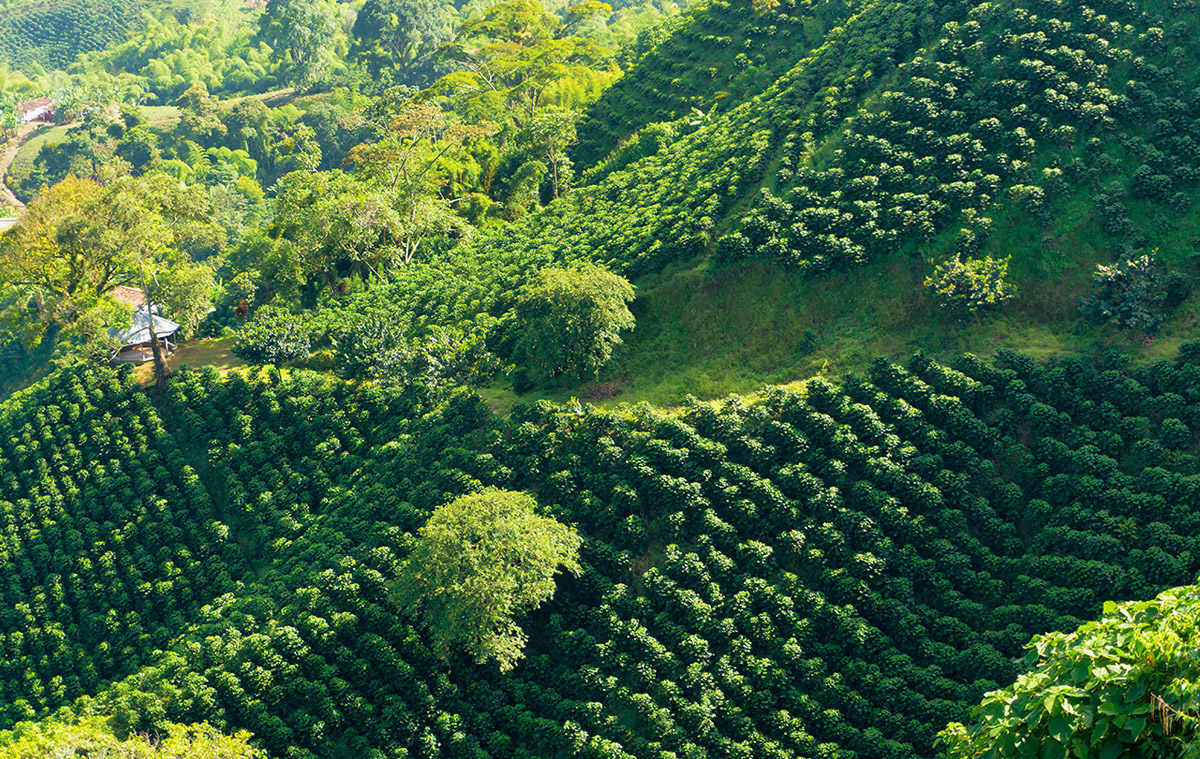

Do Terroir and Climate affect the Coffee??
Terroir is a mystery word, that we keep hearing when we talk about coffee. What, why, and how does this word have to do with coffee and why the coffee leaders, roasters, baristas and producers care about this?
What is Terroir?
A French word, meaning soil or dirt, basically everything around the soil is terroir. According to the relation of terroir with agriculture, terroir is a “definite features of soil composition – Rain, humidity, temperature and the procedures (depending on the cultural groups or countries) applied while harvesting coffee. The local population and their knowledge about coffee harvesting are what shapes the terroir of a specific type of coffee. These factors bring out its characteristics.
As every place has got its unique terroir, the originating coffee gets the characteristics that are specific to the given variety. Like how Brazilian coffee is different from Indonesian or Columbian coffee.
For roasters, the terroir of the coffee has a far greater significance than the consumers who are only bothered about its taste. As the molecular composition of the coffee is impacted by the terroir, the roasters choose the roast profile on this factor along with the potential density, aroma, and flavors of the coffee. It is advised by the coffee connoisseurs to acknowledge and understand the terroir before the plantation of the coffee as it determines the quality, productivity, and cost-efficiency.
The health of the soil, type of water, pruning frequency, the vegetation around the soil shape the quality of the coffee beans along with the climate of that area. These factors maneuver the coffee producer’s decision about the processing of the coffee – Wet processing or Dry processing, the length of the fermentation process, etc.
The changes in terroir and climate can provide quite a few distinctive changes and properties to the coffee beans. If we compare the plantation from a lush, green climate with an arid climatic place, we can see the difference in their cup profiles, density, flavor, and body of the brewed coffee. However, many producers from different locations apply similar processing methods that might produce homogenous flavors. Though, these similarities can be associated with location but are more related to the similarity in processing techniques.
 Affect of Terroir and Climate in different countries
Affect of Terroir and Climate in different countries
The Colombian Coffee
The fine washed Arabicas – processed by Wet method. The coffee beans are pulped and their skin is removed and the flesh is then fermented. The terroir of the Columbian coffee is very unique that gives it very fine acidity and fruity notes. The place receives a lot of rain and the seeds are grown at a very high altitude that is right on the equator.
The Brazilian Coffee
The world’s largest producer of coffee grows its cherries under extremely dry climatic conditions. This provides the coffee its Malt-like tastes or its cereal notes. The coffee is grown in low altitude regions and is processed naturally. The country has produced some of the finest flavored coffees due to their diversity. It has many traditional as well as contemporary varieties of coffee beans plantation like Bourbon, Catucaí, Icatú, Mundo Novo, and many more.
The Ethiopian Coffee
The country is abundant in Arabica Coffee forests and naturally growing coffee plants freely everywhere. It is known as the birthplace of Arabica. The forests are lush green with coffee, cardamoms, bamboo, and pepper providing a nourishing ecology.
The Arabica seeds here are a combination of wild and old grown trees that are uprooted from the forests and raised in gardens or small plantations. This provides Ethiopia the edge on varieties of flavor over any other coffee-producing country. They produce marked flavors like bergamot, citrus, blueberry, and peach.
The Costa Rican Coffee
Coffee beans here are the happiest with a generous amount of rainfall and sparkling sunshine. Due to the volcanic properties in the soils, the coffee plantation is abundant here. Some of the coffee seeds are grown in places that are as high as more than 1600 meters above sea level. These places get almost 3000 millimeters of rain each year. There are many varieties of coffee beans produced here that provide citrus as well as cocoa-flavored notes. The coffee here is rich, full body with robust flavor and crisp acidity.
The Kenyan Coffee
With a very lofty coffee plantation at almost 1500-2100 meters above sea level, Kenya provides the best terroir. Sitting right off the equator, the coffee seeds here are naturally provided equal day and night that is refined by perfect cloud cover. With mineral-rich topsoil due to the volcanic soil, Kenya produces some of the best coffee flavors in the world. The coffee here has astonishing acidity with fruity flavors like citrus. The Arabicas produced here have got cassy- like notes due to the high-altitude tropical climate.
The Indian Coffee
The altitude, climate, soil conditions indicate that the country is ideal for producing both Arabica and Robust (Canephora) coffee seeds. Due to the varieties of Indian terroir, the robusta seeds are more of a mixed flavored variety, naming them the ‘magical beans’ from India in the global market. The coffee seeds here provide a spicy taste, rich flavor, and a crisp body complemented by distinct acidity. The zesty flavor of the Indian coffee constitutes clove, nutmeg, cardamom, and pepper, sometimes with a hint of tropical fruits.
The Rwanda Coffee
Coffee is produced across Rwanda. Production is concentrated in the Southern and Western Provinces, especially around Lake Kivu. Land suitable for Arabica coffee is predicted to shift from 400-2,000m to 800-2500m. Losses at lower elevations will theoretically be offset by increasing climatic suitability at higher altitudes. However, highland areas are densely populated and contain natural forests which are partly protected. Moving coffee upwards would displace current land uses and cause deforestation. Coffee production is likely to be hit hardest in the Eastern Province, where droughts are more likely. Producers at lower altitudes could theoretically change to Robusta coffee.
The Congo Coffee
The Democratic Republic of Congo is the second-biggest country in Africa after Algeria. It is also home to some 87 million people, making it the fourth-most populated country in the continent. Before production plummeted in the 1990s, the DRC was a major robusta producer. Today, however, it is becoming more renowned for its high-quality arabica. Since 2010, co-operatives have formed across the country, some funded by international NGOs and state development agencies. In the space of just ten years, Congolese arabica exports have grown from between 8,000 and 9,000 metric tonnes to around 12,000 a year.
The Good Terroir vs. The Bad Terroir
To be very honest, there is no bad terroir. The coffee variety suits or distinct itself depending on the terroir. Conditional on the terroir and the climatic conditions, certain places have a better or medium reputation for producing special quality coffees. Costa Rica, Ethiopia, Columbia are some of the countries that produce excellent varieties of coffee while Brazil, India, Indonesia are acknowledged as producers of affordable coffee beans.
Terroir and Climate the most important thing??
Yes along with processing. It’s basically everything. How nature has set the environment around the growth of the coffee seeds – Soil, Climate, and Elevation along with what processing techniques are used to bring out the best flavors in the coffee beans. Though the climate change is affecting the terroirs as many varieties are hard to find now. Let us be more mindful and let mother nature shape the naturality of coffee production that brings out the flavors we love the most.
